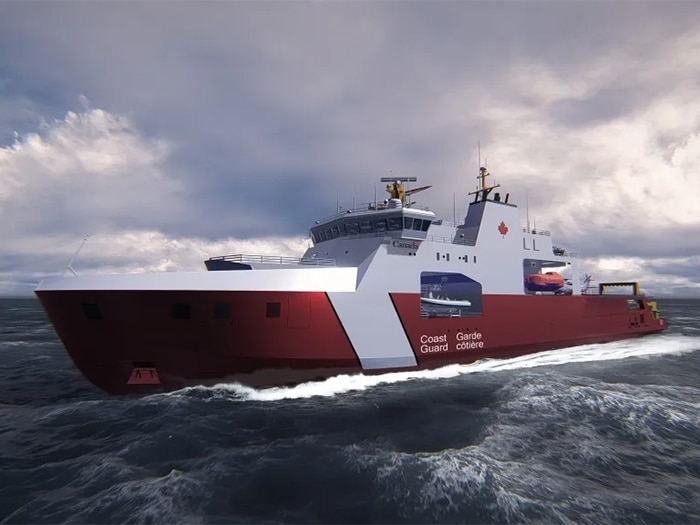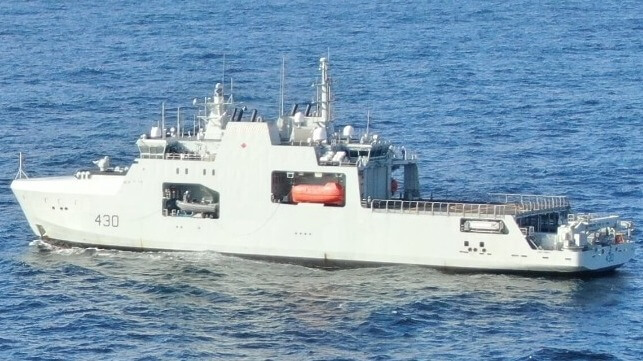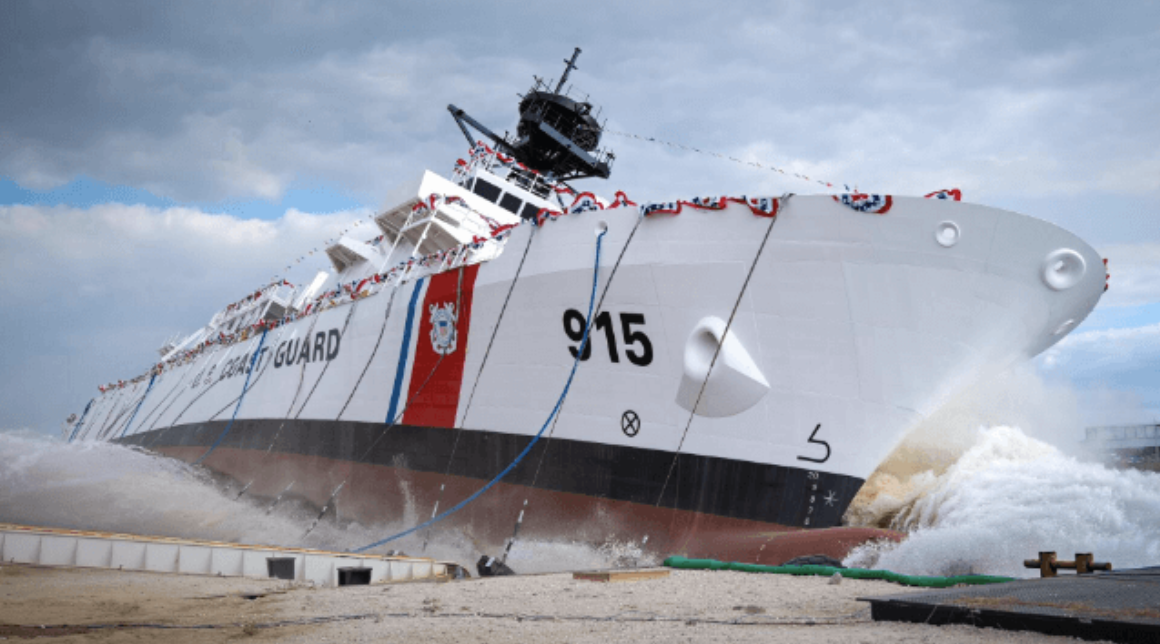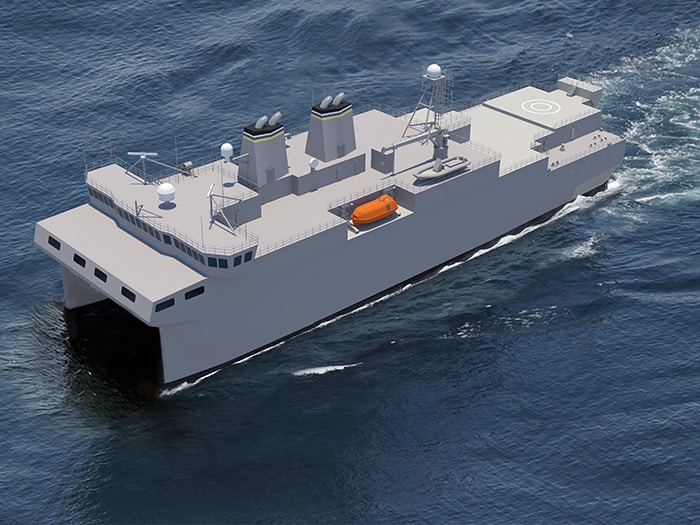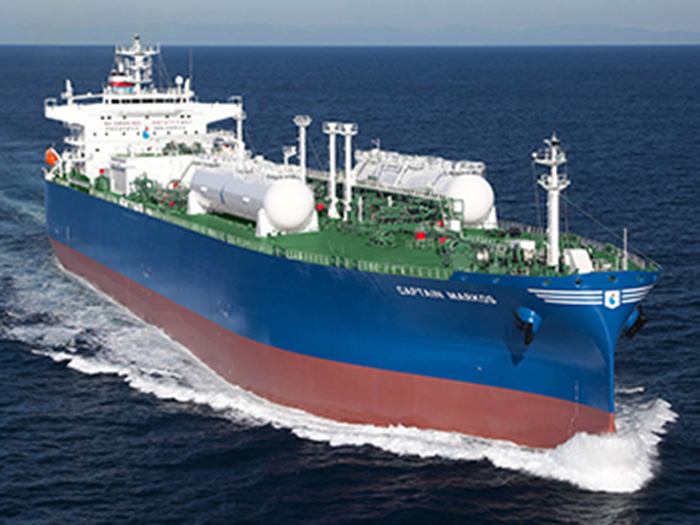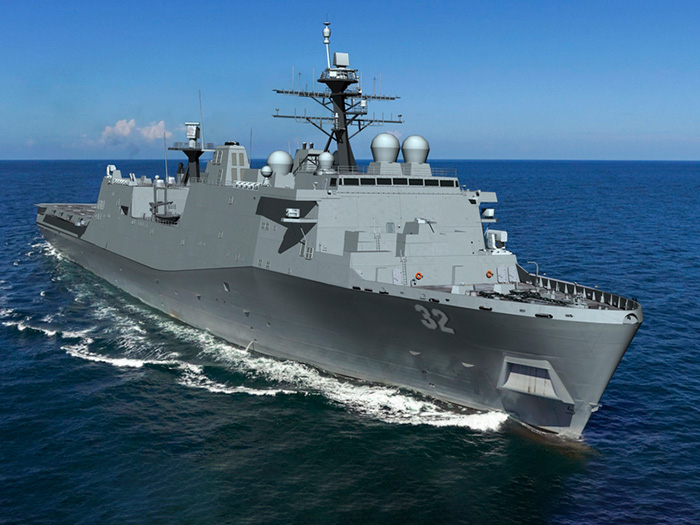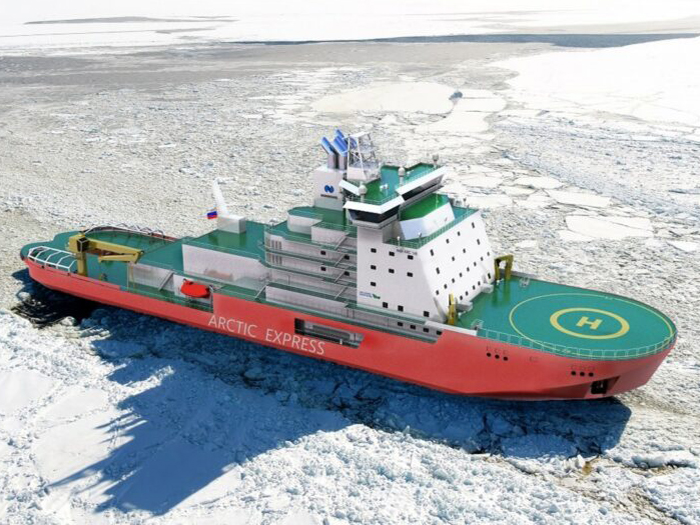


The CRIST Shipyard from Gdynia finished last year with good results. Many unique products for maritime transport and fishing were built in the shipyard.
Crist Shipyard offers its foreign contractors innovative ships. There are often unit products. CRIST has finished a partially equipped cable laying vessel NB 314 Nexans Aurora for the Norwegian shipowner (Nexans Subsea Operations AS). The final outfitting, commissioning and testing was carried out by the Norwegian shipyard Ulstein Verft AS in May. NB 314 Nexans Aurora, equipped with a DP3 dynamic positioning system, is a purpose design ST-297 CLV (Cable Laying Vessel) developed by Skipsteknisk AS from Ålesund, Norway. The vessel is designed to offer market leading capacities for worldwide operations in connection with the Nexans group Submarine Cable and umbilical activity.
“We have a guaranteed portfolio of orders and we are thinking about increasing our possibilities. We constantly focus on the development of our Shipyard,” emphasizes Jacek Milewski, Member of the Board, Financial Director Crist S.A.
Strong potential.
Polish engineers Ireneusz Ćwirko and Krzysztof Kulczycki “laid a keel” for a private shipyard (as it is said in shipbuilding jargon) over 30 years ago. The shipyard was built on the basis of strong engineering knowledge, market confidence and human capital. Production resources actively use every square meter of 28 hectares of Shipyard (including four production halls). CRIST operates a complete production line for large-size pipes with a capacity from 15,000 to 20,000 tons. Such pipes are used, among others, for the construction of offshore wind farms.
The shipyard has the largest dry dock in Northern Europe. It is almost 400 meters long and 70 meters wide. The dock is used for assembling and renovating vessels. The gantry crane is 153 meters wide and weighs 3,650 tons. A crane can lift 1000 tons, i.e. a small fishing vessel or a part of a large ship.
Specialization.
The shipyard focused on shipbuilding, marine and hydrotechnical constructions, including offshore constructions, steel structures, sea engineering and civil engineering. Innovative constructions for offshore wind farms have been built at Crist, like Heavy Lift Jack-Up Vessel Innovation and a Jack-up Barge—Thor.
Vidar offshore vessel for construction and service of the offshore market— offshore wind farms were also built in Gdynia. The ship is used to mount wind turbines in the North Sea. Innovation is an offshore ship with a length of 147.5 meters, carrying capacity of 8,000 tons. It has a crane that allows lifting structures up to 1500 tons. It has a 29,000 kW power plant. Four 95-meter legs controlled by an electric lifting and lowering system.
“The position of our shipyard on the international market was determined by the fact that, like our ships, we try to stand on several legs,” explains Ireneusz Ćwirko, President of the Board Crist.
“We diversify production responding to market needs. Our portfolio also includes: trawlers, cable ships, vessels for oil rigs, live fish carriers, floating docs, RoPax, electric ferries,” adds Krzysztof Kulczycki, who in the 1980s worked as a manager on shipbuilding contracts in Libya, Dubai and Kuwait.
Innovation course.
A unique undertaking was the construction of an eight-leg platform (Heavy Lift Jack-Up Vessel), which the French investor VINCI Construction Grands Projets called Zourite (octopus). The self-elevating vessel was intended for the construction of a motorway at sea along the coast of the island of Réunion (near Madagascar). The jack-up, 55 meters long and 3 meters in diameter, made it possible to raise the deck 14 meters above the water level. “The new coastal road is designed to replace RN1. It was being built above the sea 80 to 300 metres from shore in order to elude these natural hazards. This is a unique project in terms of its length (at 5.4 km, it is France’s longest viaduct of its kind), its width (nearly 30 m), its deck featuring a flexible dual 3-lane configuration,” informed VINCI Construction.
The construction of the Marco Polo floating dock was an innovative project, ordered by Bouygues Travaux Publics. It was used to expand the surface of the principality of Monaco. Luxurious apartments, a promenade and parks will be built on the new Monaco area of 60,000 square meters. Crist has built another fish transport vessel for fish farms for Arctic Group AS. Life fish carrier NB SC 75/2 enables the transport of live fish to processing plants. The vessel will be used to transport live salmon, trout, cod and other sea fish.
Passenger ships and ferries.
For the Ulstein shipyard, Verft CRIST has built a partially equipped hull of the world’s largest electric ferry Color Hybrid. It is the world’s largest plug-in hybrid vessel, The ship is servicing Sandefjord—Strömstad by Color Line. The ferry (160 m long) is has a capacity of 2,000 passengers and about 500 cars. The vessel’s battery package offers approximately 5MWh and can operate for up to 60 minutes at speeds up to 12k. Crist also builds parts of passenger ships for CHANTIERS DE L’ATLANTIQUE, MEYER WERFT and ULSTEIN.
Crist built the hull of one of the world’s most innovative passenger ships. The National Geographic Endurance passenger ship was built for the ship owner Lindblad Expeditions. The unit has 126 places in 69 cabins and apartments. All cabins face outside and have large windows or balconies, private bathrooms and individual climate control. It is an ice-class Polar Code PC5 (Category A) vessel. Kayaks, cross-country skis, a remote-controlled vehicle (ROV), a microscope and underwater video cameras are at the guests’ disposal.
The Herjólfur hybrid passenger-car ferry (Length: 72m, Width: 15.1m) for 540 people was built for Iceland. Fully equipped, hybrid ferry was made at the request of the Icelandic Road Administration and the Coast (Vegagerðin). The ferry has been equipped with a navigational, radiocommunication and internal communication Enamor system. Hydromega has produced hydraulic components for the fully automated Ro-Ro system.
Photos : MAREK GRZYBOWSKI





